The Radio Museum, Watchet
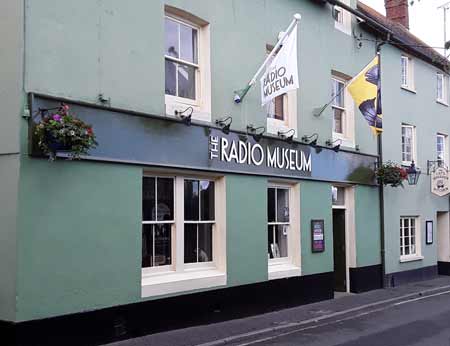
The museum has been re-located from its previous site at Washford to
the former Anchor Inn at 5, Anchor Street, Watchet, Somerset, TA23 0AZ.
Open: Wednesdays to Saturdays, 10.30 am to 5.00 pm. (Closed: Sundays, Mondays
and Tuesdays).
These times may change at short notice so please phone or email before travelling
(details below, right).
Admission is free but donations are most welcome.
Contact the Museum
Click
here to email Neil with queries about the museum.(neil@radiomuseum.org.uk)
Or phone him on 07544 620 621
or 01984 639154.
Or phone him on 07544 620 621
or 01984 639154.
Many items of early BBC equipment and ephemera are on display, some rescued from the Washford station before its re-engineering in the late 1970s, along with a collection of radios, televisions and related artifacts and literature.
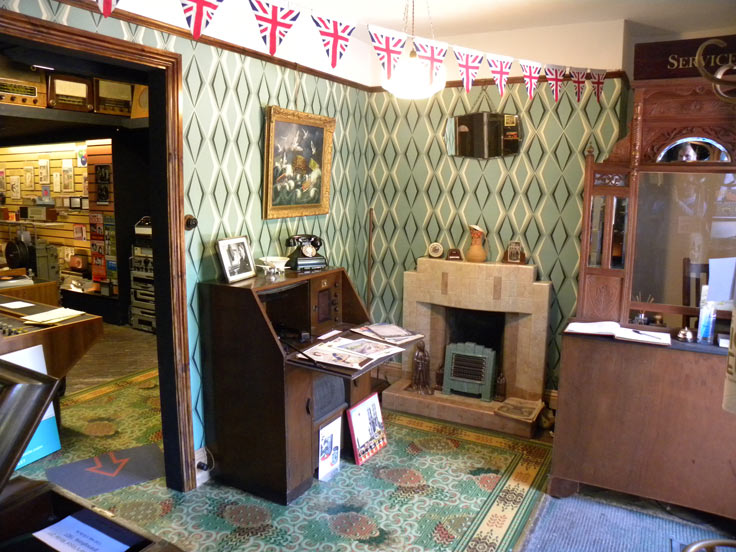
The 1920s
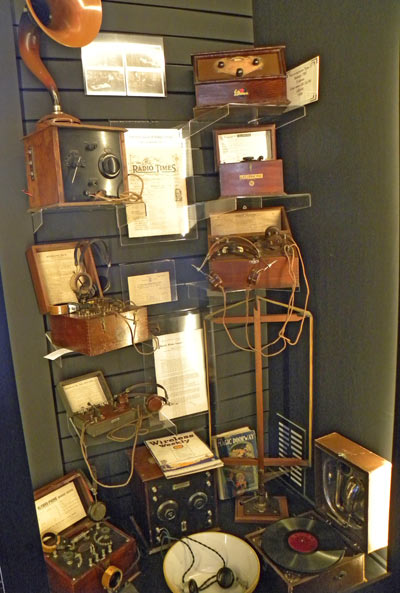
The first photos show displays of domestic equipment
and printed material from the 1920s up to the 1960s.
These are followed by pictures of a variety of BBC equipment from microphone to transmitter.
These are followed by pictures of a variety of BBC equipment from microphone to transmitter.
The late 1920s and early 1930s
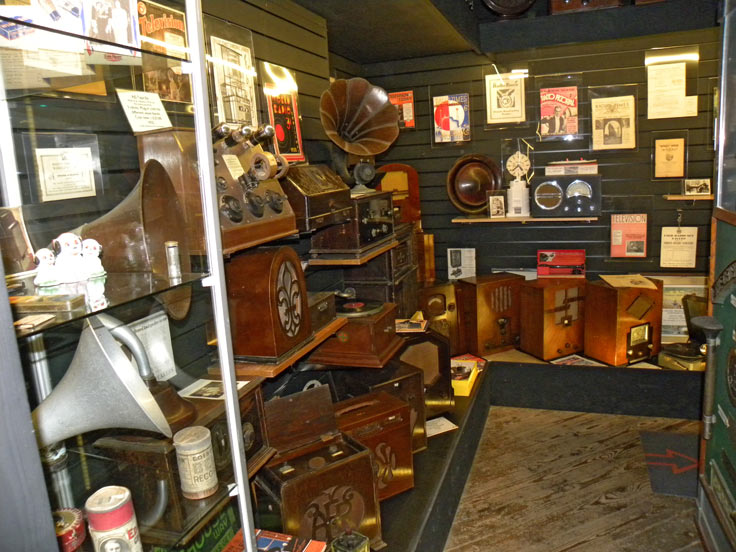
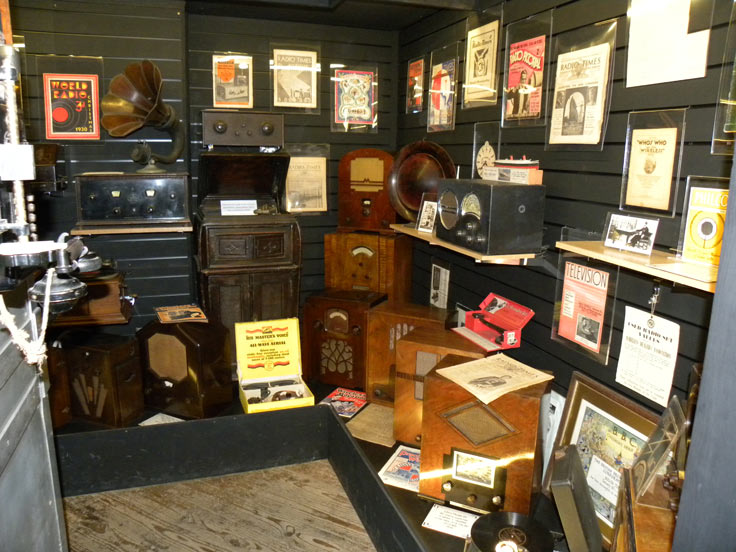
The mid 1930s
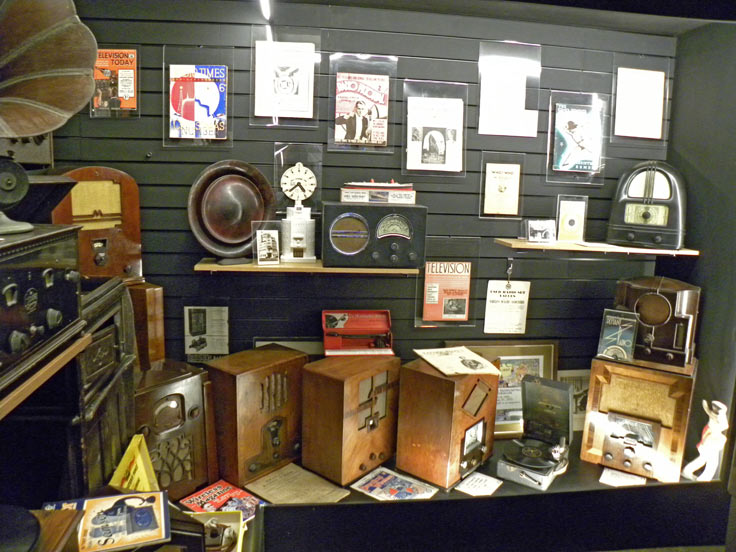
The late 1930a
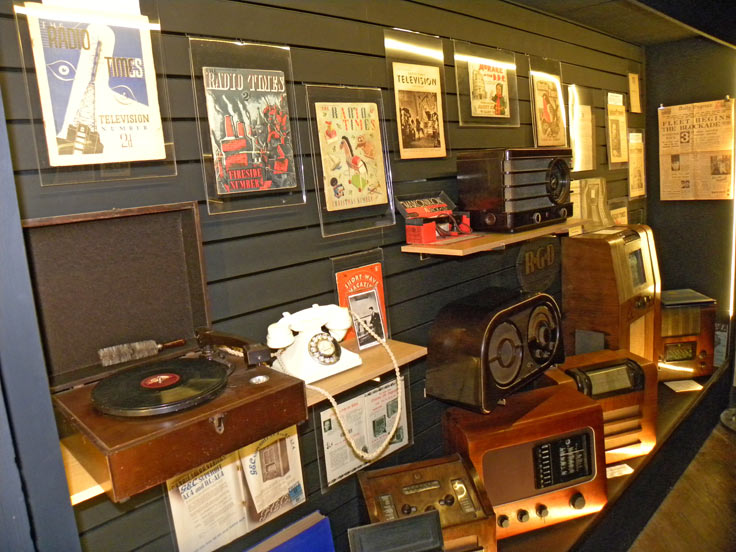
The early 1940s

The late 1940s and early 1950s
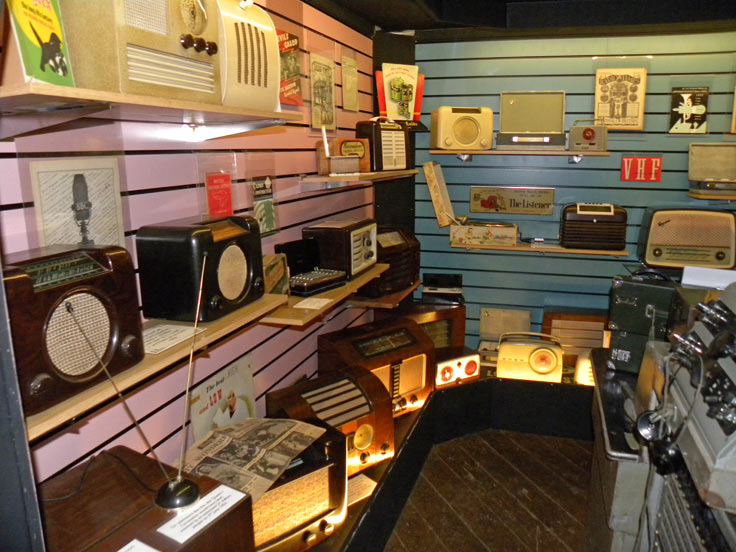
The 1950s
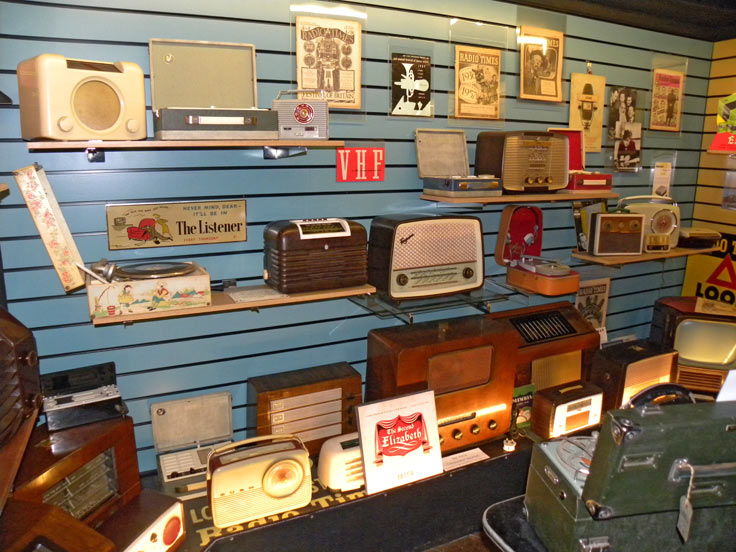
The 1960s
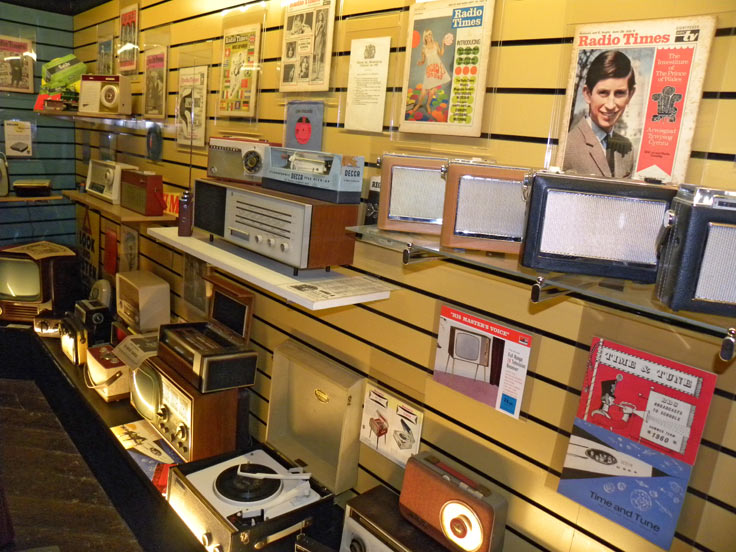
Transmitter Unit from BBC Moorside Edge
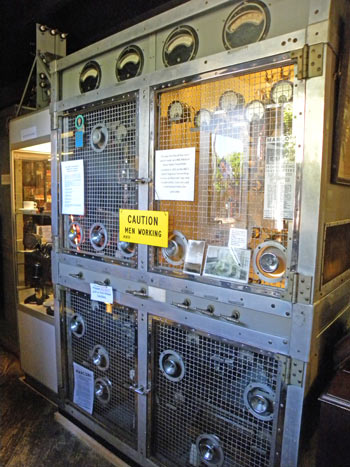
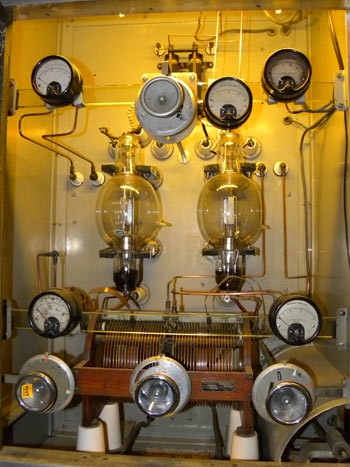
An 'A' unit from one of the Moorside Edge Regional (Marconi PB2) transmitters which were dismantled in 1984. This is identical to the original 1933 transmitters at Washford, one of which survived until 1979 when all the old equipment was scrapped. This unit was rescued by Bill Pozniak. The picture on the right shows part of the interior of the unit.
BBC OBA/8 Outside Broadcast Equipment
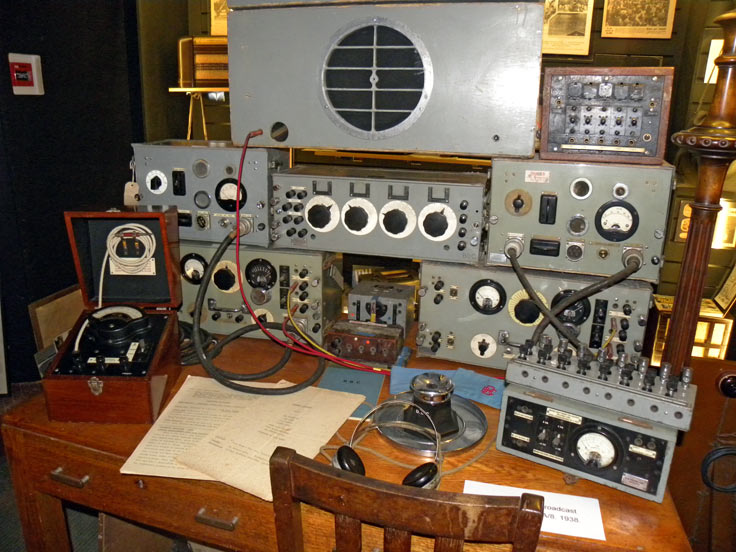
The OBA/8 system dates from 1938. The OBA/8 amplifiers have the power supplies sitting on them. The MX/18 mixer sits on them with the LSU/1 loudspeaker on top. Not confined to outside broadcast use these units formed the basis for many studios in the war years and, in a few areas, lasted into the 1960s.
BBC Type C Mobile Disc Recorder
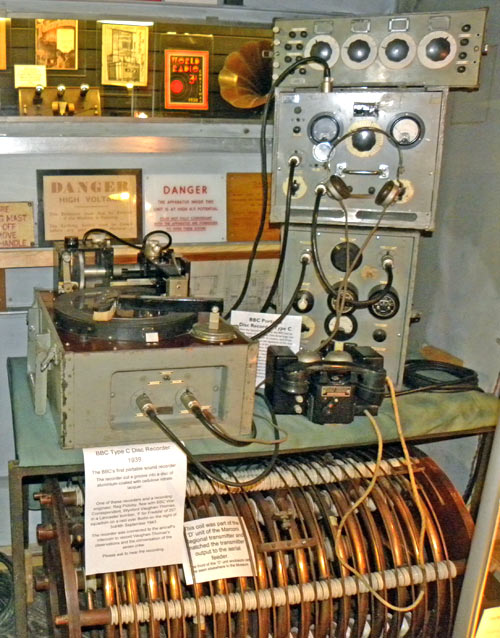
The result, called Type C, was highly successful. Two units were sent to France in 1940. Later, another unit covered the campaign in Eritrea and Ethiopia and later still, four units worked with the Forces in North Africa, where they coped well with extreme heat and sand.
A couple of weeks after D-Day the first trucks equipped with the machines landed in France and they were in action for the rest of the war.
The machine is displayed with an MX/18 mixer rather than the correct MX/24
The coil at the bottom of the picture was part of the same transmitter shown above and matched the transmitter output to the aerial feeder.
Loudspeakers
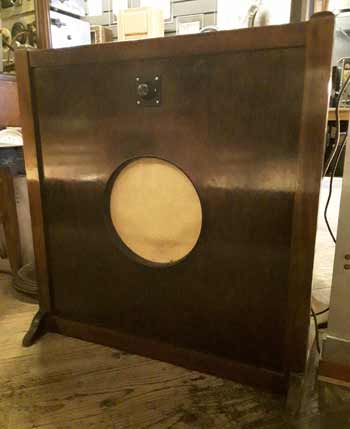
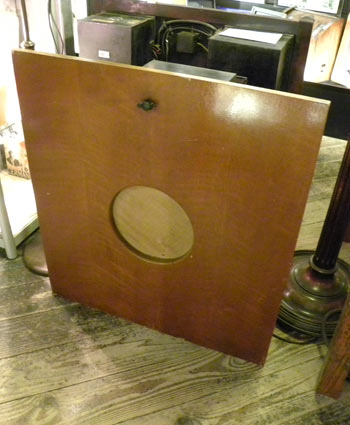
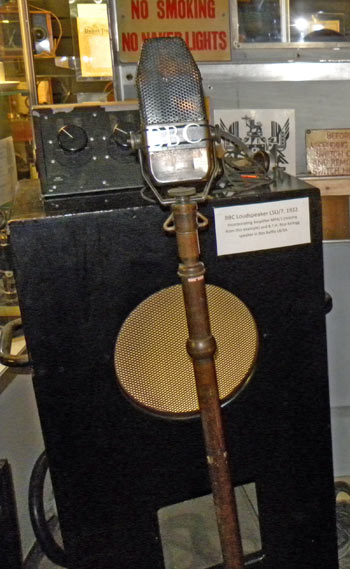
The LSU/3 (top left) is called a 'Loudspeaker Unit Emergency'.
The LSU/4a (left) was a war-time speaker often used for talk-back or monitoring of speech programmes.
The LSU/7 (above) dates from 1932. In front of it is an example of the classic BBC microphone, the AXBT, from the 1940s. It was the last stage of development of a design started ten years earlier.
Wartime Midget Recorders
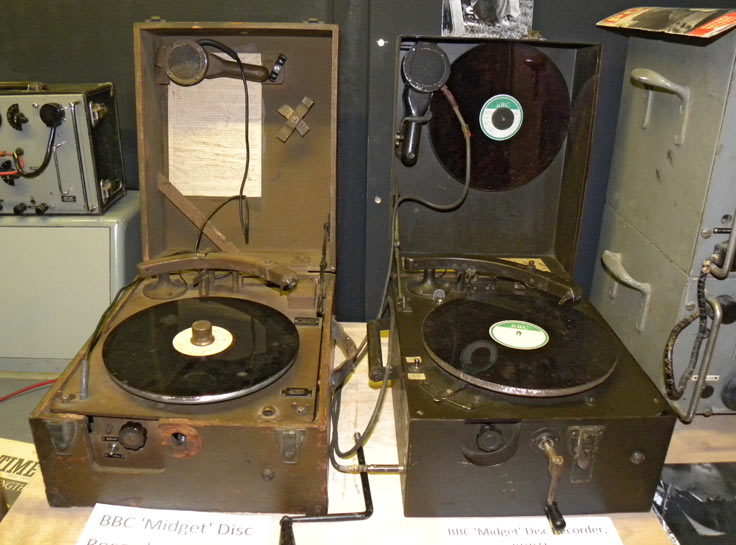
It was realised well before D-Day that the BBC's war correspondents would need a truly portable recorder if they were to be able to keep pace with the Allies' advance. The resulting machine was often called the 'Riverside Portable'. It used double-sided 10-inch discs. The machines looked rather like the black portable gramophones very popular in the 1930s and often taken on picnics - hence the name.
World War II Forces Equipment

Text here
BBC Type A Control Desk
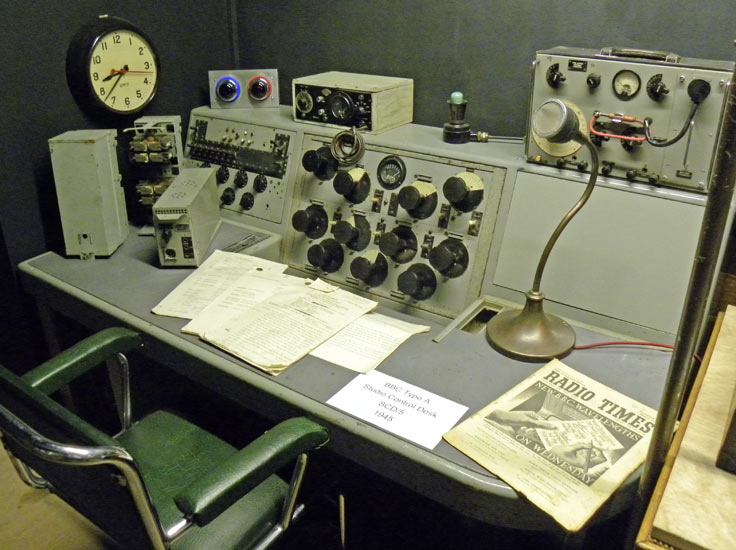
Developed during the later years of World War II, these desks began to appear in BBC studios in the post-war years, replacing the OBA/8 equipment seen above. Many of them were still in use into the 1960s. Items displayed on the desk are two relay units and an AMC/2 amplifier that would have been fitted in the desk's equipment cabinet which could contain up to 18 AMC/2 amplifiers and 4 relay units. Also shown are a portable Programme Meter, PPM/6, and a Portable Tone Source, PTS/10.
The DRT/2 Transportable Disc Player and the EMI
BTR/2 Tape Machine
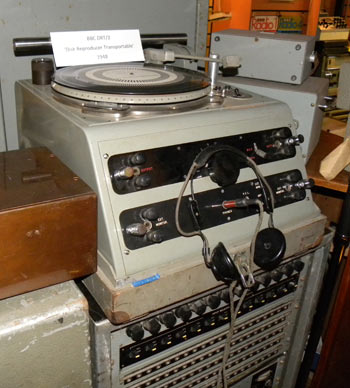
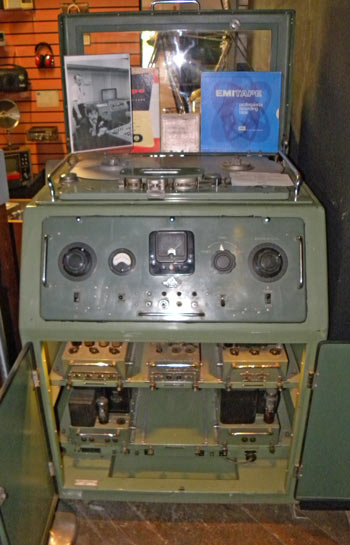
The DRT/2 was a 78rpm grams player intended for outside broadcast use.
The EMI BTR/2 tape recorder was used by the BBC to make the vast majority of recordings from the 1950s to the 1970s.
BBC OBA/9 Outside Broadcast Equipment
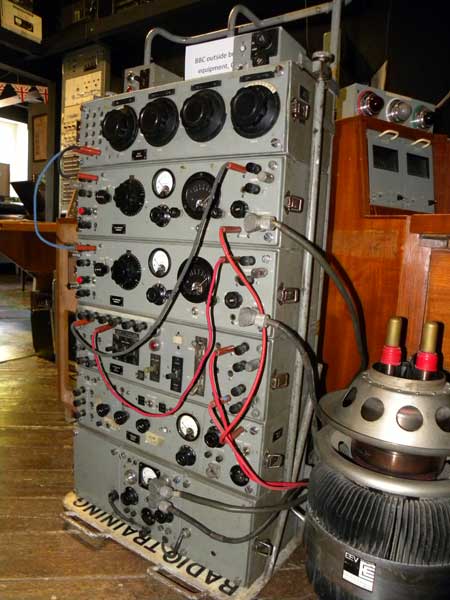
Beside it is a BR189 transmitter valve.
The Longden Outside Broadcast Control Desk
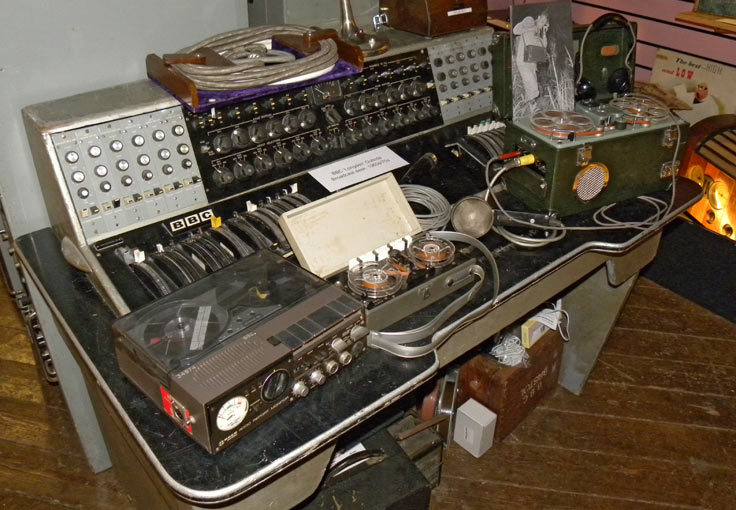
John Longden, who worked in London OBs for several years, realised that there was a need for better equipment than the war time OBA/8s. Utilising the recently developed range of transistor amplifiers he designed this transportable mixer which could be quickly rigged on site to provide the programme staff with the facilities which they normally associated with studio based programmes.
On the desk are several portable tape recorders used by the BBC - the Uher 4000 Report Monitor, Ficord 1A and an EMI RE321 (the transistorised version of the L2).
BBC Local Radio Control Desk
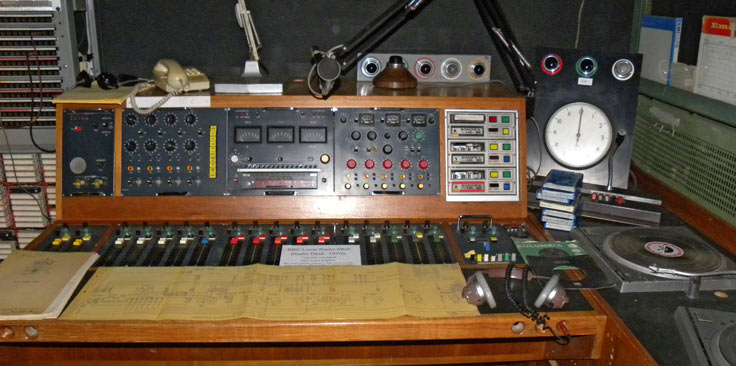
The Mk III desk is fully stereo and was designed specifically for local radio by its engineers. It was built by Equipment Department at Avenue House, Chiswick. It was designed for ease of use and very quickly found favour with presenters. In the late 70s a massive expansion of local radio was planned and Equipment Department found itself unable to cope with producing many desks in a short time. The Mk III design was given to an outside manufacturer who made desks for a few stations. Radio Lancashire was the last to lose its Mk III in 2018 ending an era which started at Radio Cumbria and gave sterling and reliable service for almost 45 years.
BBC Type D Continuity Desk
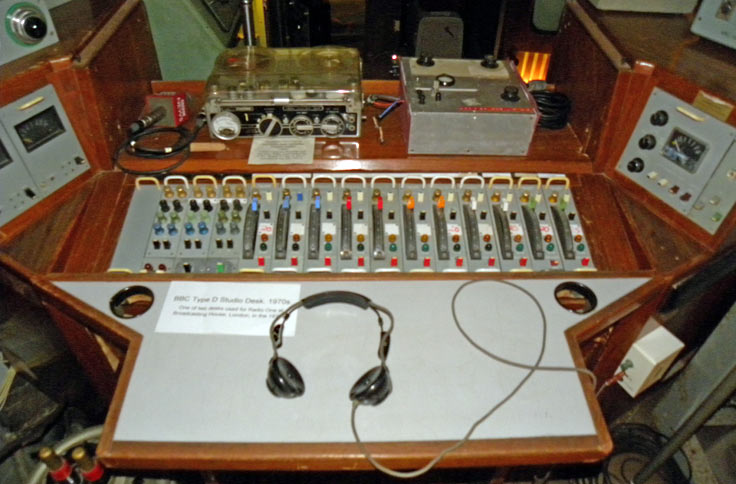
Adjacent to the main Broadcasting House Control Room were six continuity suites, two each for Radios 1 and 2 and one each for Radios 3 and 4. The item shown is the presenter's desk from one of these studios.
On the desk are a Kudelski Nagra III tape recorder and an early form of Commentator Operated Outside Broadcast Equipment, OT2/2B.
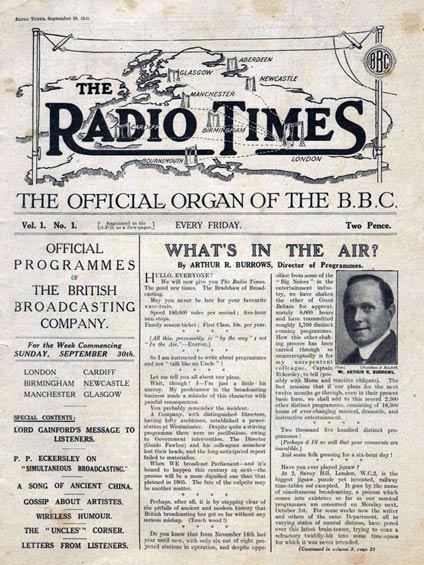
OBA/8 Equipment at Broadcasting House
OBA/8 equipment at Oxford Street
Type C disc recorder
AXBT microphone
Midget disc recorders
Type A control desk
BTR/2 tape recorder
Longden control desk
Local Radio control desk
Type D Continuity desk
The museum has a large collection of books, magazines, BBC publications and other literature relating to radio, television and broadcasting (both technical and cultural). Access is by prior appointment and a small donation to museum funds is appreciated.
Shown right is the first issue of Radio Times, dated 28th September 1923.
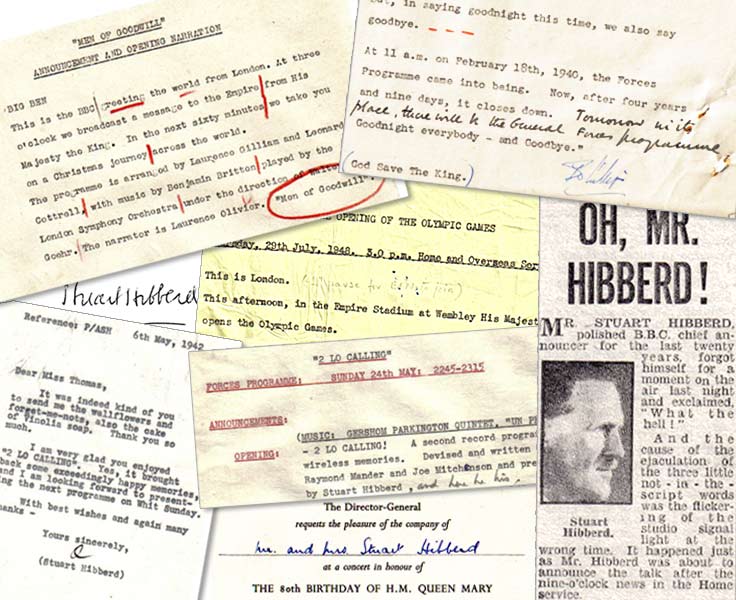
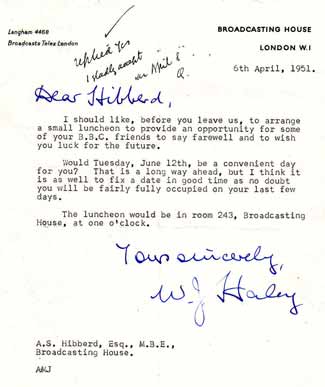
Above, right is the invitation from the Director General, Sir William Haley, to a farewell luncheon when Hibberd retired as chief announcer in 1951.

A collection of documents relating to the broadcast of the Coronation of Queen Elizabeth II in 1953, including a chart of line allocations, the opening announcement, operational procedure instructions and a timetable of overseas broadcasts.
